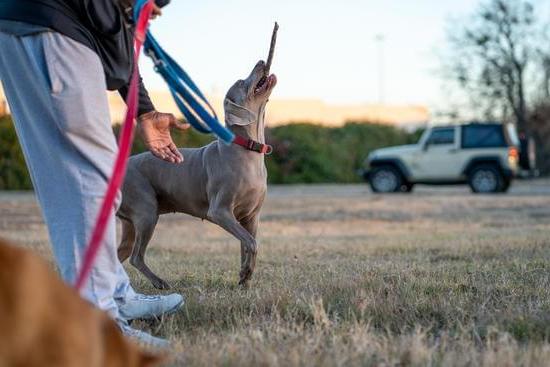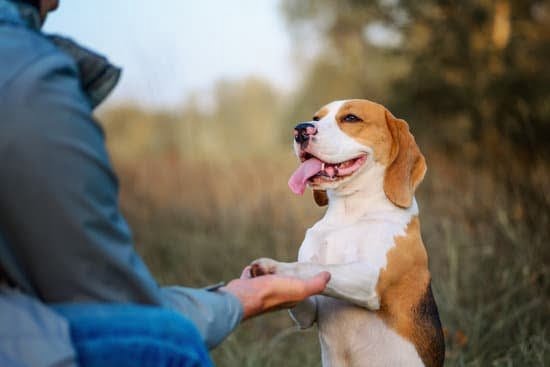Are you a dog owner looking to understand more about dog bite training? This comprehensive guide will provide you with the information you need to effectively train your dog and prevent biting incidents. From understanding why dogs bite to positive reinforcement training methods, working with professional trainers, and dealing with a dog bite incident, this article will cover everything you need to know about dog bite training.
Dog bite training is an essential aspect of owning a pet, as it not only ensures the safety of those around your dog but also promotes responsible pet ownership. By familiarizing yourself with the signs of aggression in dogs, recognizing common training mistakes, and learning about socialization and bite inhibition, you can equip yourself with the knowledge needed to effectively train your furry companion.
Whether you are a first-time pet owner or have years of experience with dogs, understanding how to handle a dog bite incident and knowing the legal and liability considerations for dog owners is crucial. This guide aims to provide valuable insights and practical tips for approaching dog bite training in a responsible and informed manner.
So let’s delve into the world of dog bite training and equip ourselves with the tools needed to foster a safe and harmonious relationship with our canine friends.
Understanding Why Dogs Bite
Dog bite incidents can be a scary and traumatic experience for both the victim and the dog owner. Understanding why dogs bite is crucial in preventing these incidents from happening. One of the most common reasons for dog bites is fear.
This fear can be triggered by unfamiliar people or situations, loud noises, sudden movements, or feeling cornered or threatened. Another reason for biting is pain or injury – when a dog is in pain, it may instinctively react defensively by biting.
It’s also important to recognize that some dogs may use biting as a form of communication when they are feeling stressed, anxious, or overwhelmed. This is often seen in situations where a dog feels its resources (food, toys, etc.) are threatened by another person or animal. By understanding the root causes of why dogs bite, owners can take proactive steps to address these issues through proper training and socialization.
In addressing the issue of understanding why dogs bite, proper dog bite training can play a crucial role in preventing future incidents. Professional trainers can provide guidance on how to identify triggering factors and manage a dog’s behavior effectively using positive reinforcement training methods.
| Important Points | Details |
|---|---|
| Reasons for Dog Bites | Fear, pain/injury, stress/anxiety |
| Communication through Biting | Dogs feeling their resources are threatened may resort to biting |
| Role of Dog Bite Training | Professional trainers help in identifying triggers and managing behaviors effectively through positive reinforcement methods |
Signs of Aggression in Dogs
Dogs, like any other living being, may exhibit signs of aggression when they are feeling threatened, anxious, or in pain. It is important for dog owners to be able to recognize these signs in order to prevent potential dog bite incidents. Here are some common signs of aggression in dogs:
- Growling or snarling
- Baring teeth
- Stiff body language
- Intense staring
- Lunging or charging
If you notice any of these behaviors in your dog, it is crucial to address the underlying issue and seek professional help if necessary. Understanding the reasons behind your dog’s aggression is key to effectively managing and addressing the behavior.
Positive Reinforcement Training Methods
When dealing with a potentially aggressive dog, positive reinforcement training methods can be effective in promoting good behavior and discouraging aggressive tendencies. This involves rewarding your dog for exhibiting calm and non-aggressive behavior, rather than punishing them for their aggression.
- Use treats or toys as rewards for good behavior
- Provide verbal praise and affection when your dog shows signs of non-aggression
- Consistency and patience are key when utilizing positive reinforcement training methods
It is important to note that using forceful or aggressive training techniques can exacerbate your dog’s aggressive tendencies, so it is best to avoid such methods. By using positive reinforcement training, you can build a trusting and respectful relationship with your dog while addressing their aggression issues.
Positive Reinforcement Training Methods
When it comes to dog bite training, positive reinforcement is an essential method for teaching dogs appropriate behavior and preventing aggression. Positive reinforcement involves rewarding your dog for good behavior rather than punishing or scolding them for bad behavior. This can include using treats, toys, praise, and affection to encourage the behavior you want to see in your dog.
By using positive reinforcement training methods, you can effectively teach your dog not to bite or display aggressive behaviors. When a dog receives rewards for calm and non-aggressive behavior, they are more likely to repeat that behavior in the future. This method helps build a strong bond between you and your pet while also promoting a safer environment for everyone involved.
It’s important to note that positive reinforcement training should be consistent and ongoing. Dogs learn best through repetition and consistency, so it’s crucial to continue practicing these methods throughout your dog’s life. Additionally, seeking guidance from a professional trainer who specializes in dog bite training can provide valuable insight and personalized techniques for your specific situation.
| Sub-Heading | Data |
|---|---|
| Positive Reinforcement | Rewarding good behavior with treats, toys, praise, and affection |
| Consistency | Ongoing practice of positive reinforcement throughout the dog’s life |
Working With a Professional Trainer
When it comes to addressing dog bite training, working with a professional trainer can make a significant difference. A professional trainer has the expertise and experience to recognize the underlying causes of aggressive behavior in dogs and can provide tailored solutions to address these issues effectively.
Here are some important considerations when working with a professional trainer for dog bite training:
- Qualifications: Look for a trainer who is certified and experienced in dealing with aggressive behavior in dogs. Ask for references and testimonials from previous clients to ensure their credibility.
- Customized Training Plans: A professional trainer will assess your dog’s behavior and create a customized training plan that addresses the specific triggers and reasons behind the biting behavior.
- Positive Reinforcement Techniques: A reputable trainer will use positive reinforcement techniques to encourage good behavior in your dog. This may involve rewarding your dog for calm and non-aggressive behavior, rather than punishing them for aggression.
It’s important to remember that dog bite training is not just about addressing the symptoms of aggression but also understanding the root causes of the behavior. A professional trainer can offer valuable insights and guidance in creating a safe and harmonious environment for both you and your pet.
Avoiding Common Training Mistakes
Skipping Basic Obedience Training
One common mistake that dog owners make when it comes to dog bite training is skipping basic obedience training. It is important for every dog to learn basic commands such as sit, stay, and come. Without a strong foundation in obedience training, it can be difficult to address more complex behavior issues like aggression or biting.
Using Punishment-Based Methods
Another common mistake in dog bite training is using punishment-based methods. Punishing a dog for aggressive behavior can actually make the problem worse and increase the risk of a dog bite incident. Instead, positive reinforcement methods should be used to encourage good behavior and discourage aggression.
Inconsistency in Training
Consistency is key when it comes to dog bite training. Inconsistency in training methods or rules can confuse a dog and lead to mixed signals about what is acceptable behavior. This inconsistency can increase the likelihood of aggression and biting. It’s important for all family members and anyone interacting with the dog to be consistent in their approach to training.
By avoiding these common training mistakes, dog owners can set themselves and their pets up for success in preventing dog bites through proper training and positive reinforcement techniques. Working with a professional trainer who specializes in addressing aggressive behavior can also provide valuable support and guidance for both the owner and the pet.
Socialization and Bite Inhibition
Socializing Your Dog
Socialization plays a crucial role in preventing dog bites. By exposing your dog to different environments, people, and animals from an early age, you can help them develop the necessary social skills to interact safely with others. This can include taking your dog to public places, enrolling them in obedience classes, and arranging playdates with other dogs.
It’s important to monitor your dog’s behavior during socialization and intervene if they show signs of aggression or fear. Proper socialization can greatly reduce the risk of your dog biting someone out of fear or anxiety.
Bite Inhibition Training
Bite inhibition training is essential for teaching a dog to control the force of their bite. This training typically begins during puppyhood and involves teaching the dog how to use their mouth gently. By providing feedback when a puppy bites too hard during play, they learn to moderate their bite strength.
Using positive reinforcement techniques such as rewarding gentle play and redirecting biting onto appropriate toys can effectively teach bite inhibition. Consistency and patience are key when implementing this type of training, as it takes time for a dog to learn how much pressure is acceptable when mouthing or playing with humans.
By prioritizing socialization and bite inhibition training, dog owners can significantly reduce the likelihood of their pets engaging in harmful biting behaviors. Combining these approaches with proper supervision and responsible ownership can create a safe environment for both dogs and the people they encounter.
Remember that proper socialization and bite inhibition are lifelong processes, requiring ongoing attention even as your dog matures into adulthood.
Handling a Dog Bite Incident
In the unfortunate event of a dog bite incident, it is crucial to know how to handle the situation properly. Whether you are the victim or a witness, understanding the appropriate steps to take can make a significant difference in the outcome. Handling a dog bite incident requires a calm and composed approach to ensure the safety and well-being of everyone involved.
First and foremost, seek medical attention immediately. Even if the dog bite seems minor, it is essential to have it evaluated by a healthcare professional. Dog bites can lead to infections and complications if not properly treated. Additionally, reporting the incident to local authorities may be necessary for documentation purposes.
After seeking medical attention, it is important to gather information about the dog and its owner. Take note of the dog’s breed, size, and any visible tags or identification. If possible, obtain contact information from the owner or witness to the incident. This information may be needed for legal or liability considerations.
Lastly, consider seeking support from professionals such as animal control officers or law enforcement. They can provide guidance on next steps and help prevent future incidents with proper intervention. It is crucial to address any concerns about aggressive behavior in dogs through proper channels and resources related to dog bite training.
Handling a dog bite incident can be overwhelming, but with prompt action and appropriate support, it is possible to navigate through the aftermath effectively while prioritizing safety for all parties involved.
Legal and Liability Considerations for Dog Owners
As a responsible dog owner, it is important to understand the legal and liability considerations that come with owning a dog, especially when it comes to dog bite incidents. In many places, the law holds dog owners accountable for any harm caused by their pets, including dog bites. Therefore, it is essential to be aware of your legal responsibilities and take necessary precautions to prevent such incidents.
In some jurisdictions, there are specific laws pertaining to dog bite incidents known as “strict liability” laws. This means that regardless of the circumstances leading up to the bite, the owner is liable for any injuries caused by their dog biting someone. Other areas may have “one-bite” rules where the owner may only be held liable if they were aware of their dog’s aggressive tendencies or previous biting behavior.
It is crucial for dog owners to have adequate liability insurance coverage in case their pet injures someone. Homeowner’s or renter’s insurance policies often include coverage for dog bites, but it’s important to review and understand the terms of the policy to ensure adequate protection.
Additionally, some insurance companies have breed-specific restrictions and may not provide coverage for certain breeds known for aggressive behavior. Seeking guidance from an insurance agent can help ensure proper coverage for potential liabilities related to a pet’s behavior.
Conclusion and Resources for Further Learning
In conclusion, dog bite training is an essential aspect of responsible dog ownership. Understanding why dogs bite and identifying signs of aggression are crucial in addressing the issue effectively. Positive reinforcement training methods and working with professional trainers can help prevent and manage dog bites. Socialization and bite inhibition also play a significant role in preventing aggressive behavior in dogs.
It is important for dog owners to be aware of the liability considerations and legal implications surrounding dog bites. Handling a dog bite incident properly is not only necessary for the well-being of the victim but also for the safety and future of the involved dog. By avoiding common training mistakes and prioritizing socialization, owners can create a safe environment for their dogs and others.
For those seeking to delve deeper into this topic, there are numerous resources available for further learning about dog bite training. Whether it be books, online courses, or workshops, there are plenty of options to continue educating oneself about responsible dog ownership and preventing dog bites. With dedication, patience, and knowledge, dog owners can successfully train their pets to avoid aggressive behaviors.
In summary, while dealing with a potential or actual biting incident can be daunting, being equipped with the necessary knowledge on why dogs bite and how to train them effectively can make all the difference in creating a harmonious relationship between humans and their canine companions.
Frequently Asked Questions
Can a Dog Be Trained Out of Biting?
Yes, a dog can be trained out of biting through consistent and positive reinforcement training. Teaching the dog alternative behaviors and setting clear boundaries can help reduce biting tendencies.
How Do You Discipline a Dog Who Bites?
When disciplining a dog who bites, it’s important to remain calm and avoid physical punishment. Instead, focus on redirecting their behavior, providing appropriate chew toys, and seeking professional help if the biting behavior persists.
Is Bite Training Good for Dogs?
Bite training, or teaching a dog not to bite, is essential for their safety and the safety of those around them. It helps prevent aggression and allows for better socialization with humans and other animals. Consistent training and positive reinforcement are key in bite training for dogs.

Welcome to the blog! I am a professional dog trainer and have been working with dogs for many years. In this blog, I will be discussing various topics related to dog training, including tips, tricks, and advice. I hope you find this information helpful and informative. Thanks for reading!





